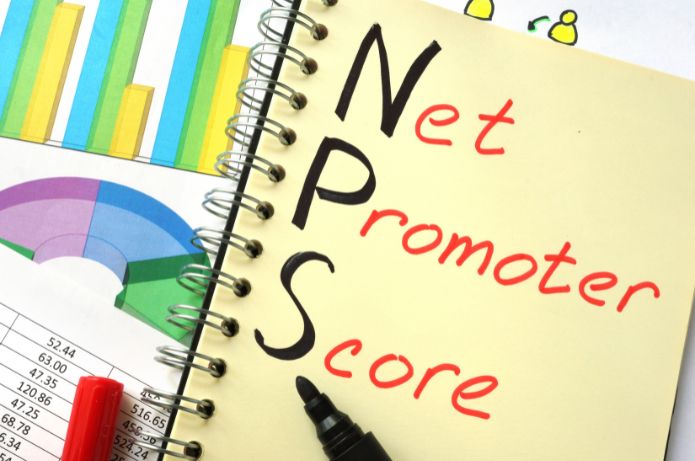NPS, ou Net Promoter Score, é uma métrica utilizada para medir a satisfação e lealdade dos clientes em relação a uma empresa, produto ou serviço. Desenvolvido por Fred Reichheld, Bain & Company e Satmetrix em 2003, o NPS tornou-se uma das ferramentas mais populares para avaliar a experiência do cliente e prever o crescimento do negócio.
Funcionamento:
O NPS é baseado em uma única pergunta fundamental: “Em uma escala de 0 a 10, qual a probabilidade de você recomendar nossa empresa/produto/serviço a um amigo ou colega?”
Categorização dos respondentes:
Com base nas respostas, os clientes são classificados em três grupos:
1. Promotores (pontuação 9-10): Clientes leais e entusiastas que provavelmente continuarão comprando e recomendando a outros.
2. Passivos (pontuação 7-8): Clientes satisfeitos, mas não entusiasmados, vulneráveis a ofertas competitivas.
3. Detratores (pontuação 0-6): Clientes insatisfeitos que podem prejudicar a marca através de feedback negativo.
Cálculo do NPS:
O NPS é calculado subtraindo a porcentagem de Detratores da porcentagem de Promotores:
NPS = % Promotores – % Detratores
O resultado é um número entre -100 e 100.
Interpretação do NPS:
– NPS > 0: Geralmente considerado bom
– NPS > 50: Considerado excelente
– NPS > 70: Considerado world-class
Benefícios do NPS:
1. Simplicidade: Fácil de implementar e entender.
2. Benchmarking: Permite comparações entre empresas e setores.
3. Previsibilidade: Correlacionado com o crescimento do negócio.
4. Acionabilidade: Identifica áreas de melhoria e clientes insatisfeitos.
Limitações do NPS:
1. Simplificação excessiva: Pode não capturar nuances da experiência do cliente.
2. Falta de contexto: Não fornece razões para as pontuações atribuídas.
3. Variações culturais: As interpretações da escala podem variar entre culturas.
Melhores práticas:
1. Acompanhamento: Perguntar o motivo da pontuação para obter insights qualitativos.
2. Frequência: Medir regularmente para acompanhar tendências.
3. Segmentação: Analisar o NPS por segmentos de clientes ou produtos.
4. Ação: Utilizar os insights para melhorar produtos, serviços e experiências.
Implementação:
O NPS pode ser implementado através de pesquisas por e-mail, SMS, website, ou integrado em aplicativos e produtos digitais.
Importância para negócios:
O NPS tornou-se uma métrica chave para muitas empresas, sendo frequentemente utilizado como um KPI (Key Performance Indicator) para avaliar a satisfação do cliente e o desempenho geral do negócio.
Evolução do NPS:
Desde sua introdução, o conceito de NPS evoluiu para incluir práticas como o “Closed Loop Feedback”, onde as empresas acompanham ativamente os respondentes para resolver problemas e melhorar a experiência.
Conclusão:
O Net Promoter Score é uma ferramenta valiosa para medir e melhorar a lealdade do cliente. Embora tenha suas limitações, sua simplicidade e correlação com o crescimento do negócio o tornaram uma métrica amplamente adotada. Quando usado em conjunto com outras métricas e práticas de experiência do cliente, o NPS pode fornecer insights valiosos para impulsionar a satisfação do cliente e o crescimento do negócio.


